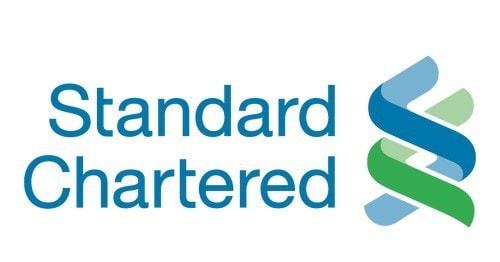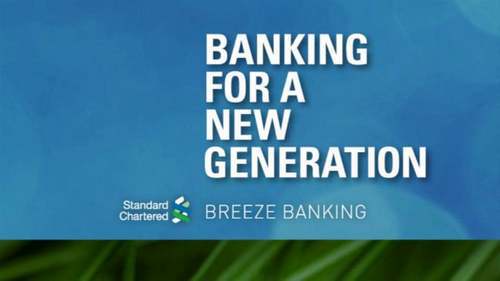The Marketing mix of Standard Chartered Bank analyses the 7Ps of Standard Chartered Bank, which includes the Product, Price, Place, Promotion, People, Physical Evidence, and Process of Standard Chartered Bank. Standard Chartered Bank is a publicly traded company of British origins. It is associated with banking and financial services and deals in related products. Standard Chartered Bank was founded in 1969 after a merger between Standard Bank of British, South Africa, The Chartered Bank of India, Australia, and China. It faces competition from the following banks-
- Morgan Stanley
- Barclays Bank
- Wells Fargo
- HSBC
- JP Morgan and Chase
- Goldman Sachs Group
- ABN AMRO
About Standard Chartered Bank
- Type: Bank services
- Industry: Financial services
- Founded: 1969
- Founders: Royal Charter, Chartered Bank of India, Australia and China, Standard Bank
- Headquarters: London, England, UK
- Area served: 70 countries and territories
- Key people: Bill Winters – Chief Executive Officer, and Peter Sands – Chairman
- Number of employees: Over 85,000 Worldwide
Table of Contents
Standard Chartered Bank Product Strategy
Standard Chartered is a universal bank operating in treasury services, the institutional banking industry, corporate banking, and consumer banking.
The new Product Mix of Standard Chartered in 2024 is as follows (Source).
- Transaction Banking: Offering solutions like cash management to support treasuries and financing options for supply chain funding.
- Financial Markets Services: Providing research, pricing, and trade execution across various asset classes, including FX, rates, and commodities. It also offers structured solutions and specialized financing.
Standard Chartered Bank Pricing Strategy
Standard Chartered Bank’s pricing and marketing strategy, particularly in the realm of banking and financial services, tends to be multifaceted:
- Competitive Pricing: Standard Chartered likely aligns its pricing with industry standards to remain competitive in the global market, considering regional and international competitors.
- Value-Based Pricing: The bank’s pricing strategy may also reflect the value proposition of its services, especially for premium and specialized offerings.
- Dynamic Pricing Models: Considering the diverse markets Standard Chartered operates in, dynamic pricing models could be employed to adapt to different economic conditions and customer segments.
- Segmentation-Based Pricing: Different pricing for various customer segments (retail, corporate, and institutional clients) ensures tailored service offerings.
- Regulatory Compliance: Pricing is also guided by the regulatory frameworks of the multiple jurisdictions in which the bank operates.
Standard Chartered Bank Place Strategy
Standard Chartered Bank started its operations in the United Kingdom and has its headquarters base in London. It has spread its presence to India, Hong Kong, China, Bangladesh, Australia, Japan, Nepal, Pakistan, Malaysia, Singapore, Taiwan, Vietnam, Sri Lanka and Cambodia. Standard Chartered Bank has a powerful and widespread distribution network that includes five thousand and five hundred ATMs and twelve hundred branches, joint ventures, associates, and subsidiaries established in nearly seventy countries.
It has over 87,000 employees to help in direct and indirect foreign currency dealings and handling. Standard Chartered Bank has launched a mobile banking app titled Standard Chartered Breeze for iPad, iPhone, and computer. It promotes both internet and mobile banking so that it can encourage cashless transactions.
Standard Chartered Bank’s place strategy includes:
- Global Presence: It operates across multiple continents, emphasizing strong connections between critical global markets.
- Local Market Focus: Despite its global reach, Standard Chartered tailors its services to local market needs, blending international expertise with regional insights.
- Digital Banking Platforms: The bank heavily invests in digital banking solutions to facilitate global transactions and services.
- Strategic Hubs: It establishes vital operational hubs in major financial centers to ensure efficient global operations.
- Diverse Branch Network: The bank maintains a network of branches and offices worldwide to provide accessible services to clients.
Standard Chartered Bank Promotion Strategy
Standard Chartered Bank has launched both innovative and aggressive marketing policies. It has launched commercials in electronic and print media via television, newspapers, and magazines. The bank has used social media marketing with the help of social media platforms like Twitter, blogs, Facebook, and Instagram to create positive brand visibility. Its official web page encourages customers’ direct participation in grievances and queries.
The Company distributed free iPads to various individuals through its digital marketing and promotional policy. Standard Chartered Bank has entered into sponsorship deals to become the main sponsor of a football team, Liverpool Football Club. The bank has undertaken philanthropic and CSR activities and has ties with charitable organizations like Seeing is Believing and the International Agency for the Prevention of Blindness.
Some Recent Video ads and Print ads for Standard Chartered Bank are:
https://youtu.be/tbbmmImz99g
Standard Chartered Bank People Strategy
The “People” component of the Service Marketing Mix for Standard Chartered Bank involves various aspects related to direct marketing to employees, customer service, and the overall experience provided by the bank’s personnel. Here are some key points regarding the “People” element for Standard Chartered Bank:
- Highly Skilled Workforce: Standard Chartered Bank invests in recruiting, training, and retaining highly skilled financial professionals to ensure that they provide expert advice and services to their customers.
- Customer Service Excellence: The bank emphasizes excellent customer service, training its staff to be responsive, knowledgeable, and friendly to ensure a positive customer experience.
- Diverse and Inclusive Culture: Standard Chartered Bank promotes a diverse and inclusive workplace culture, believing that a diverse workforce is essential for effectively understanding and serving its global customer base.
- Employee Development Programs: The bank is committed to the professional development of its employees, offering various training programs, workshops, and educational opportunities to help them advance in their careers.
- Performance Management: Standard Chartered Bank implements robust performance management systems to ensure employees are aligned with the bank’s objectives, rewarding high performers with bonuses, promotions, and other incentives.
- Global Presence, Local Expertise: With a workforce spread across many countries, the bank leverages its global presence to provide local expertise in its markets, ensuring that it understands local cultures and customer needs.
- Leadership and Governance: The bank prides itself on strong leadership and governance, with experienced leaders guiding the strategic direction and ensuring that the organization adheres to the highest ethical and professional standards.
- Commitment to Customer Privacy and Security: Employees are trained to uphold stringent customer privacy and security standards, recognizing the importance of trust in financial services.
- Community Engagement: Standard Chartered Bank encourages its employees to engage with and contribute to their communities, reinforcing its commitment to social responsibility and building positive relationships with the public.
- Innovation and Adaptability: The bank fosters a culture of innovation and adaptability among its staff, encouraging them to embrace new technologies and approaches to banking to meet customers’ evolving needs.
Standard Chartered Bank Process Strategy
The “Process” component of the Service Marketing Mix for Standard Chartered Bank refers to the procedures, mechanisms, and flow of activities by which the bank delivers its services to customers. This aspect of marketing management is crucial for ensuring efficiency, customer satisfaction, and service quality. Here are some key points regarding the “Process” element for Standard Chartered Bank:
- Customer Onboarding: Standard Chartered Bank has streamlined the customer onboarding process, utilizing digital platforms and technology to make account opening quick, easy, and user-friendly, requiring minimal paperwork.
- Digital Banking Services: The bank offers comprehensive digital banking services, including online banking, mobile apps, and digital wallets, enabling customers to conduct transactions, apply for loans, and manage accounts from anywhere, at any time.
- Secure Transactions: A strong focus on secure transaction processes, using advanced encryption and security measures to protect customer data and financial transactions from fraud and unauthorized access.
- Personalized Banking Solutions: The bank employs a consultative approach to provide customized banking solutions, using data analytics to understand customer needs and tailor services accordingly.
- Efficient Complaint Resolution: Standard Chartered Bank has an efficient process for handling and resolving customer complaints, with clear channels for feedback and dedicated teams to address customer issues promptly.
- Continuous Process Improvement: The bank commits to continuously improving its processes through regular reviews, customer feedback, and adopting best practices to enhance service delivery and customer experience.
- Cross-channel Integration: Integration across various channels (branch, online, mobile) to provide a seamless and consistent banking experience, allowing customers to switch between channels according to their preferences.
- Loan Processing: Streamlined loan processing procedures that minimize the time from application to disbursement, with clear communication on requirements, timelines, and status updates.
- Investment and Wealth Management: Standard Chartered Bank offers a structured process for investment and wealth management services, including financial planning, risk assessment, and portfolio management, tailored to individual client profiles.
- Regulatory Compliance: Rigorous processes to ensure compliance with local and international banking regulations, including anti-money laundering (AML) and know-your-customer (KYC) procedures, to maintain the integrity and trustworthiness of banking operations.
Standard Chartered Bank Physical Evidence Strategy
The “Physical Evidence” component of the Service Marketing Mix refers to the environment in which the service is delivered and where the firm and customer interact, as well as any tangible commodities total assets that facilitate the performance or communication of the service. For Standard Chartered Bank, physical evidence plays a crucial role in shaping perceptions and experiences of the brand. Here are some key points regarding the “Physical Evidence” element for Standard Chartered Bank:
- Branch Design and Layout: Standard Chartered Bank branches are designed to be welcoming and professional, with a layout that ensures privacy for customer consultations and transactions. The design often reflects the bank’s commitment to modernity and efficiency.
- Digital and Online Presence: The bank’s website, online banking interface, and mobile applications are digital evidence of its services. These platforms are designed to be user-friendly, secure, and informative, providing a seamless digital banking experience.
- Branding Materials: The use of consistent branding across all materials, including brochures, business cards, reports, and advertising, helps reinforce the bank’s identity and values. The distinctive logo and corporate colors are easily recognizable.
- ATMs and Self-service Kiosks: The availability and appearance of ATMs and self-service kiosks are physical evidence of the bank’s commitment to convenience and accessibility. These are strategically placed and maintained to ensure reliability.
- Official Documents: Tangible items like bank statements, loan agreements, and financial reports are professionally designed and branded, enhancing the perception of trustworthiness and professionalism.
- Corporate Social Responsibility (CSR) Initiatives: Engagement and communication about CSR initiatives provide physical evidence of the bank’s values and commitment to social and environmental responsibility, strengthening its brand image.
- Employee Appearance: The professional attire and presentation of bank staff contribute to the physical evidence, reflecting the bank’s standards for professionalism and trust.
- Signage and Environmental Graphics: External and internal signage, including directional signs and informational graphics, are designed to ease navigation and enhance the customer experience within branches.
- Office Space and Customer Meeting Areas: The quality, comfort, and privacy of office spaces and meeting areas for customer consultations underscore the bank’s emphasis on customer care and professionalism.
- Security Features: Visible security features, such as surveillance cameras and security personnel, reinforce the sense of safety and trust in the bank’s physical environment.
Liked this post? Check out the complete series on Marketing Mix

